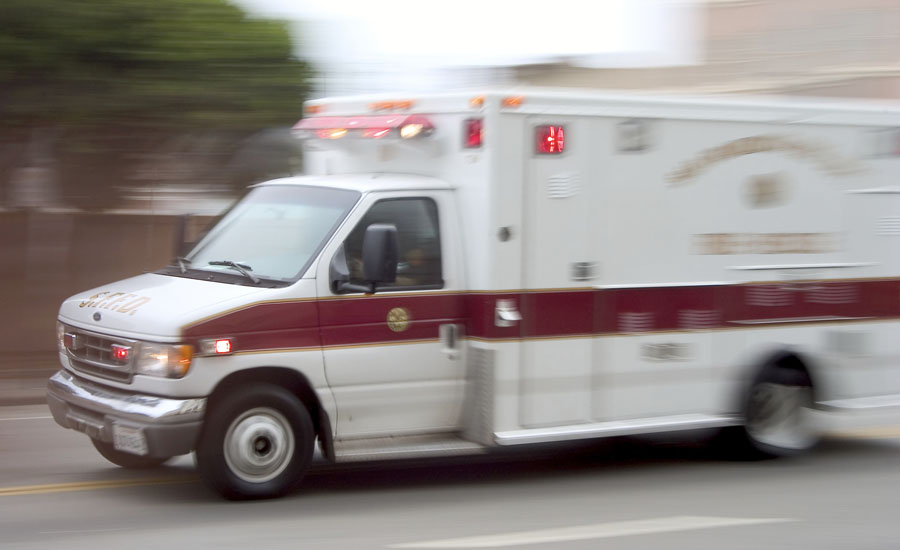“Mobile stroke units” could save lives in cities

Mobile Stroke Units (MSUs), vehicles equipped to provide stroke treatment before reaching a hospital, provided lifesaving care to stroke patients in Manhattan approximately 30 minutes faster, compared to patients transported to hospitals in traditional ambulances and who did not receive stroke treatment until arriving at the hospital, according to new research published in the Journal of the American Heart Association, the open access journal of the American Heart Association.
“This study provides further evidence suggesting a potential role for mobile stroke units in dense urban areas to increase our ability to treat stroke patients faster,” said Lee H. Schwamm, M.D., executive vice chairman of neurology and director of the MGH Comprehensive Stroke Center at Massachusetts General Hospital in Boston. “This study joins a large body of efforts to improve how we swiftly recognize, triage, transport and treat patients with stroke, which is the ultimate goal.”
Treatment must be fast
Ischemic stroke – the most common type of stroke – occurs when a vessel supplying blood to the brain becomes blocked by a blood clot and prevents regular blood flow. Ischemic strokes are often treated with the medication alteplase, which breaks up clots. However, patients must be accurately diagnosed, and treatment with alteplase should be administered within 3 to 4.5 hours from when symptoms begin. MSUs offer the possibility of diagnosis and treatment for stroke in a specialized ambulance before patients arrive at the hospital.
In this study, the patients treated for ischemic stroke in the MSU received alteplase approximately 30 minutes sooner than patients who received treatment at the hospital.
“When it comes to stroke treatment, 30 minutes can be the difference between making a full recovery from a stroke and living independently, or becoming disabled and needing help with the activities of daily living,” said the study’s lead author, Matthew E. Fink, M.D., chair of neurology and the Louis and Gertrude Feil Professor in Clinical Neurology at Weill Cornell Medicine in New York, and neurologist-in-chief at NewYork-Presbyterian/Weill Cornell Medical Center. “The faster patients receive alteplase, the more likely they are to recover quickly and with fewer complications.”
About the study
The study utilized NewYork-Presbyterian Hospital’s Mobile Stroke Units (MSUs), and they were equipped with a portable CT scanner that allows neurologists on board to evaluate if a patient is having an ischemic stroke. If a stroke is diagnosed, the emergency medical technicians in the MSU can immediately administer alteplase. The New York City MSU program was launched in October 2016 by NewYork-Presbyterian, Weill Cornell Medicine, Columbia University Irving Medical Center and the Fire Department of the City of New York with one unit in Manhattan. One MSU was operated and responded to EMS calls from 9 a.m. to 5 p.m. on weekdays during the study.
For the study, researchers analyzed the treatment of 66 patients with symptoms of stroke who were taken to the hospital by an MSU, compared to 19 suspected stroke patients taken by a traditional ambulance in Manhattan, New York City’s most densely populated borough, from October 2016 to September 2017. Neurologists present on the MSUs were able to diagnose ischemic stroke in 29 of the patients and treated them with alteplase immediately. Nine of the 19 patients transported by a traditional ambulance were diagnosed with ischemic stroke and received alteplase at the hospital.
This study is the first to assess whether MSUs could treat patients faster than conventional treatment in an urban area as densely populated as New York City. MSUs’ ability to expedite stroke treatment has been tested in previous studies in Cleveland, Houston, and Berlin and Hamburg, Germany.
Limitations
Limitations to this study included a relatively small sample size and the possibility of confounding factors such as traffic, the day of the week and the time of day when patients were transported. Researchers state that the patients treated by a traditional ambulance were identified strictly by criteria such as the type of call made to emergency medical services (EMS) and the type of care received to ensure as close of a comparison to MSU treatment as possible.
“We know that faster treatment equals better outcomes. However, further research is needed to establish if mobile stroke units improve long-term health outcomes and are a cost-effective solution in stroke systems of care for large cities, as they reflect a significant financial investment for cities and EMS agencies,” said Dr. Schwamm. “While the lack of definitive evidence of benefit and of third-party reimbursement for mobile stroke unit staffing and care are barriers, additional studies are ongoing and will help address these critical issues.”
Co-authors are Benjamin R. Kummer, M.D.; Mackenzie P. Lerario, M.D.; Madeleine D. Hunter, B.A.; Xian Wu, M.P.H.; Elizabeth S. Efraim, B.S.; Setareh Salehi Omran, M.D.; Monica L. Chen, B.A.; Ivan L. Diaz, Ph.D.; Daniel Sacchetti, D.O.; Tim Lekic, M.D.; Erin R. Kulick, Ph.D.; Sammy Pishanidar, M.D.; Saad A. Mir, M.D.; Yi Zhang, M.D.; Glenn Asaeda, M.D.; Babak B. Navi, M.D., M.S.; Randolph S. Marshall, M.D., M.S. Author disclosures are in the manuscript.
The study was funded with the support of the W. P. Carey Foundation.
Looking for a reprint of this article?
From high-res PDFs to custom plaques, order your copy today!





